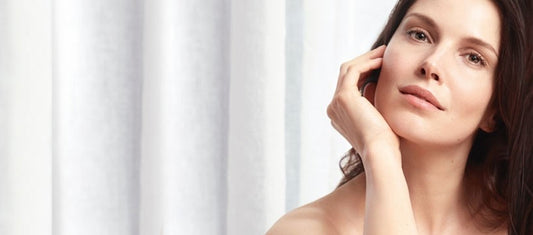
Why You Need Baby Cream by Frezyderm: Banish Nappy Rash
Nappy rash is a red skin irritation that occurs in young babies. According to the NHS, around 1 in 4 babies on average suffer from nappy rash at one point or another. But what can you do to soothe your baby’s discomfort and speed up the healing process?
In this guide, we’re going to discuss one of our favourite and most-recommended products for new parents, Frezyderm Baby Cream. A gentle, soothing formula designed to alleviate the physical appearance of nappy rash and provide some much-needed relief for your little one, this is a must-have for your bathroom cabinet and your on-the-go baby bag.
What is nappy rash?
As mentioned in the introduction, nappy rash is a common skin condition that affects young toddlers and newborn babies. While the nappy rash is, as its name implies, typically caused by wearing dirty nappies for too long, it can also be caused by a range of other factors.
The nappy rash typically resembles a red, blotchy skin rash across the bottom and nappy area, although it can also sometimes blister and feel hot to the touch. Your baby might also be increasingly fussy if they’re suffering from nappy rash.
Note: it’s essential to be able to differentiate nappy rash from other skin rashes that can occur in babies, but we’ll discuss that further on in the article.
What causes nappy rash?
Aptly named, the most common reason for nappy rash is prolonged skin contact with a dirty nappy. When your baby’s delicate skin comes into contact with urine or poo for extended periods of time, the skin ends up being irritated by ammonia, which is present in both.
However, other factors can also cause nappy rash or a similar red rash in the nappy area:
- Putting your baby’s nappy on too tight. Putting your baby’s nappy on too tight can cause a red irritated rash around their waist - make sure to put their nappy on firmly but still leave a little wiggle room to avoid irritation.
- Certain soaps. Your baby’s skin can be highly sensitive and extremely delicate during its early years. Certain soaps, gels, or even the residue of certain detergents - can irritate their skin and cause a rash similar to a nappy rash.
- Certain medications. This includes laxatives designed for babies and antibiotics.
- Not cleaning the nappy area thoroughly. When changing your baby’s nappy, it’s important to clean the nappy area thoroughly using gentle, baby-safe wipes.
How to treat the nappy rash at home
So, what to do if your little one develops nappy rash? Three words: Baby cream: Frezyderm. This dermatologically-tested baby cream is amazing at soothing your baby’s physical discomfort while also working at reducing inflammation and reducing skin redness. Enriched with wound-healing chamomile oil and a small dose of zinc oxide, this cream works to reduce symptoms and banish nappy rash in just a couple of days.
How to use Frezyderm Baby Cream
For best results, use this Baby Cream before any nappy rash develops: the potency of the formula can prevent nappy rash from occurring. As the soothing formula hydrates the skin, the anti-inflammatory properties fight off any potential irritation. The cream also creates a barrier between the skin and any irritants, preventing other skin irritations (such as allergies or sensitivities) from occurring.
If your baby already has nappy rash, apply the Baby Cream after each nappy change, making sure to thoroughly clean the nappy area with baby-safe products first. Apply the cream gently over the affected area, before putting on a fresh nappy.
How to prevent nappy rash
While Frezyderm’s Baby Cream can help alleviate symptoms of nappy rash, the best way to prevent any future rashes and discomfort is to take preventative measures. Here’s how to avoid nappy rash in young babies:
- Change their nappy regularly. It’s not a good idea to wait until the last moment before changing your little one’s nappy. We all know it’s not the most fun part of parenthood, but changing a dirty nappy quickly will prevent nasty rashes that will leave your baby fussy and in physical discomfort. Always carry a spare nappy or two on you in public, so you can perform a quick nappy change on-the-go when necessary.
- Only use baby-approved soaps. Baby skin is highly sensitive, so make sure you only use cleansing products designed for babies. If you’re using baby products but still noticing skin irritation, consider the possibility of allergies. Switch to allergen-friendly formulas and see if you notice a difference.
- Don’t bathe your baby more than twice a day. This can lead to skin dryness, making your baby’s skin more vulnerable to irritation.
- Don’t reapply nappies right away. It’s a good idea to let your baby’s irritated skin come into contact with fresh air before re-applying a nappy.
- Avoid talcum powder. This dries out the skin and can prolong nappy rash further if used when the skin is already irritated.
How can I know if my baby’s rash is nappy rash?
While the nappy rash is incredibly common, it’s normal for parents to feel worried when their little one develops a new rash. In most cases, rashes are harmless and are typically caused either by nappy rash or other forms of skin irritation. As we mentioned already, baby skin is incredibly delicate, so it’s not unusual to see the odd bit of irritation now and again.
However, rashes can also mean that something more serious is going on. If you want to know whether your baby is suffering from a nappy rash or something that needs medical attention, take your baby’s temperature. If they have a fever, they might have an infection. As they’ll possibly need medical attention or a prescription, always contact your doctor if your baby presents both a rash and a fever at the same time.
If your baby’s rash doesn’t disappear when pressing on the skin with a glass, call 999. A red rash under the skin is a sign of meningitis and needs to be seen urgently.










